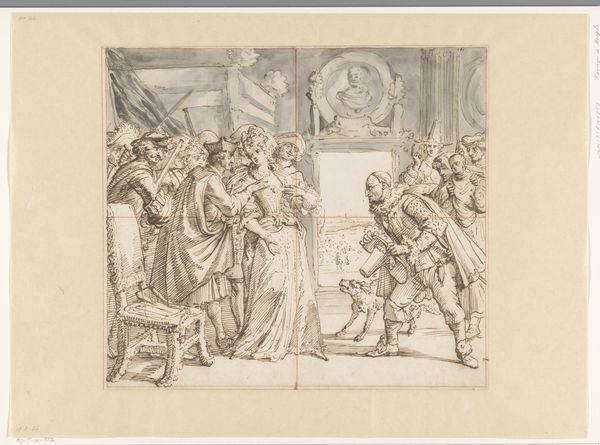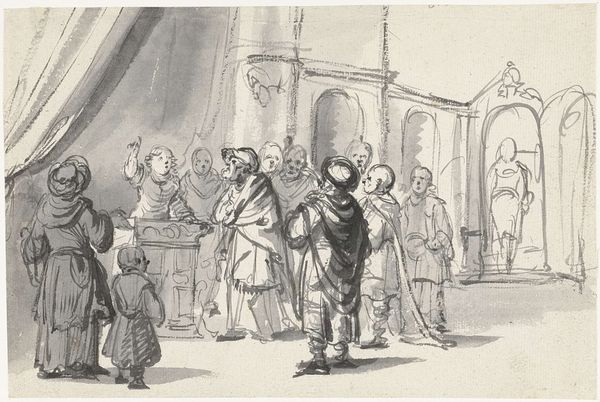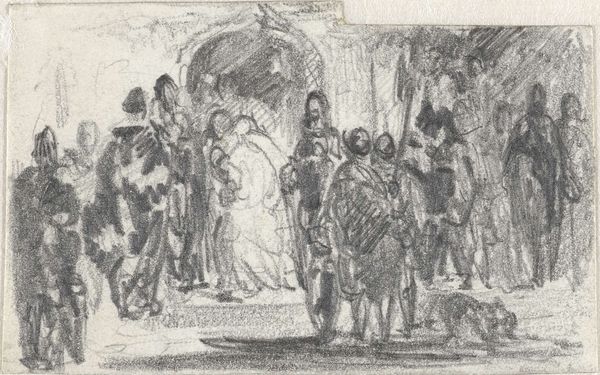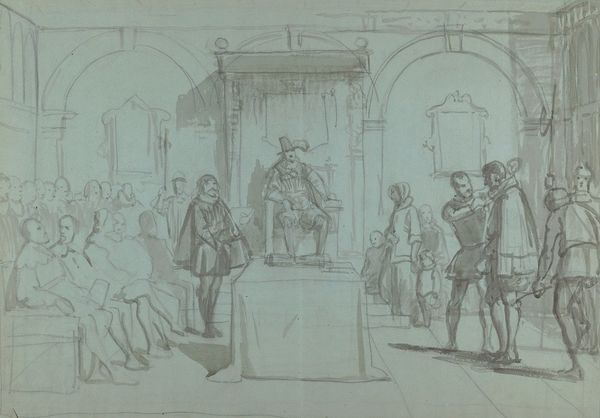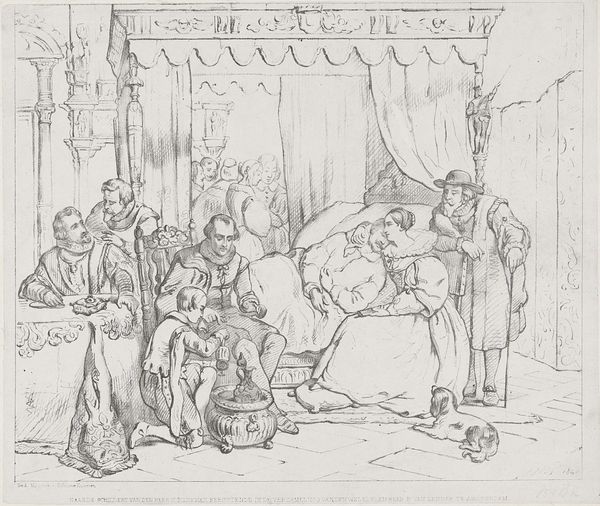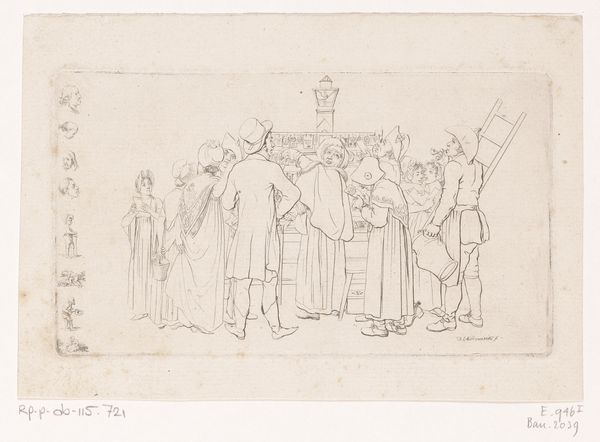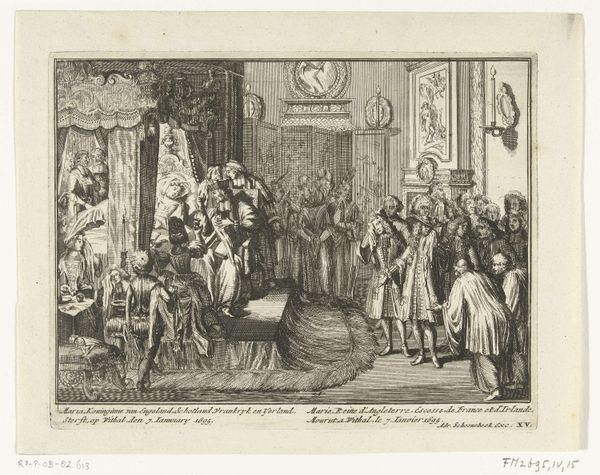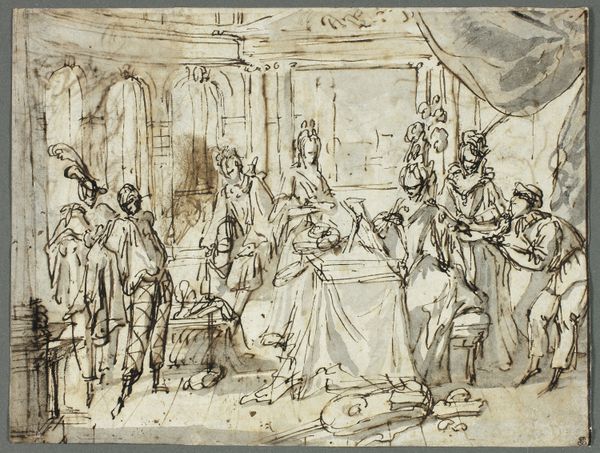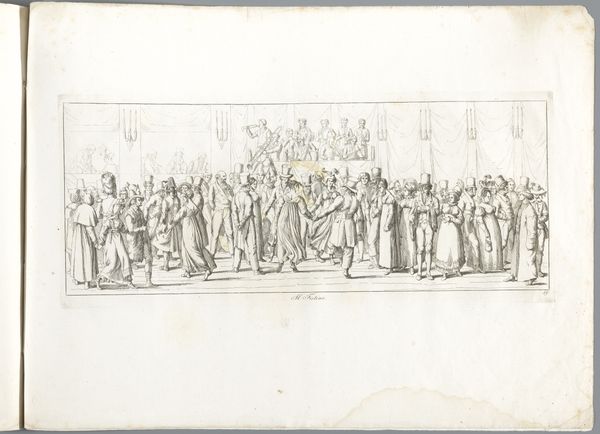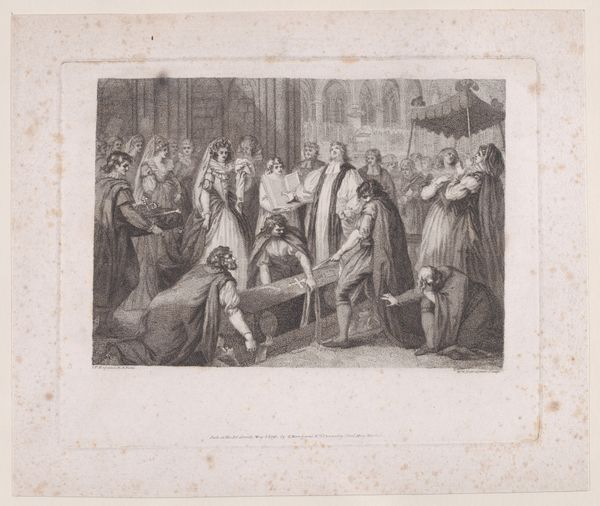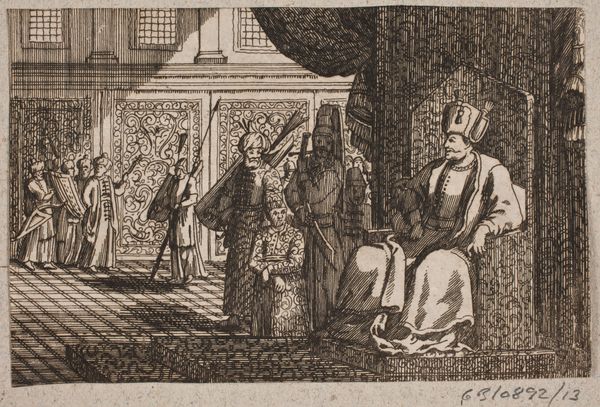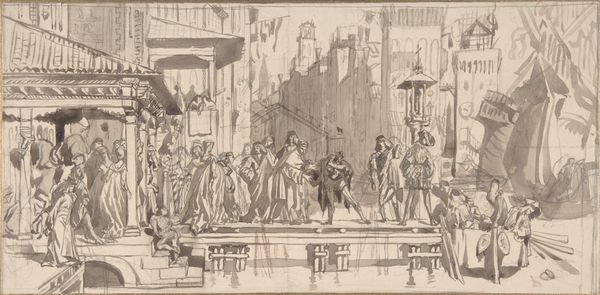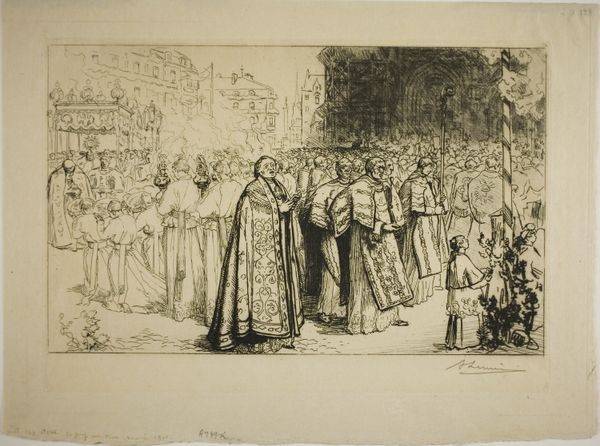
Illustration til Adam Oehlenschlägers digt "De to kirketårne" 1844
0:00
0:00
drawing, print, ink, engraving
#
drawing
#
medieval
#
narrative-art
# print
#
figuration
#
ink
#
history-painting
#
engraving
Dimensions: 106 mm (height) x 150 mm (width) (bladmaal)
Editor: Lorenz Frølich created this illustration in 1844, its title is “Illustration til Adam Oehlenschlägers digt "De to kirketårne"” – a mouthful! It seems to depict a royal family emerging from a church, all done in very detailed ink work. It has a distinct historical mood and I wonder about the narrative implications. What story do you think the image tells and what does it reveal about its historical context? Curator: Well, the first thing to note is that this image isn't just art for art's sake. It's an illustration, a piece of visual culture meant to accompany and interpret Oehlenschläger's poem. Understanding that connection is key. How do you think the narrative of the poem informs what we’re seeing? Editor: I haven’t read it. What elements are especially important considering it’s linked to the poem? Curator: Considering the prevalent artistic movements during Frølich’s time, it would be useful to discuss his nationalistic leanings. This artwork is more than a historical image; it mirrors the sociopolitical functions and public roles of art, influencing and being influenced by dominant themes. It’s quite clear in Frølich's choice to depict a romanticised medieval scene, glorifying Denmark’s past. He does not provide a totally accurate reflection, instead giving his view, which helps build the collective image of Denmark. Editor: That's fascinating! So it's about constructing a national identity as much as illustrating a poem? What role would this image, reproduced as a print, have played in shaping public opinion back then? Curator: Exactly. Prints made art accessible. Disseminating art widely would mean national myths and historical narratives circulated more freely, creating a unified cultural experience. Editor: It's eye-opening to think about art operating on that level, consciously building a national story. Thanks! Curator: Yes, looking at art with its political purposes reveals the intentional and unintentional influences within visual imagery. Thank you for sharing thoughts; it’s given me some additional perspective as well!
Comments
No comments
Be the first to comment and join the conversation on the ultimate creative platform.
